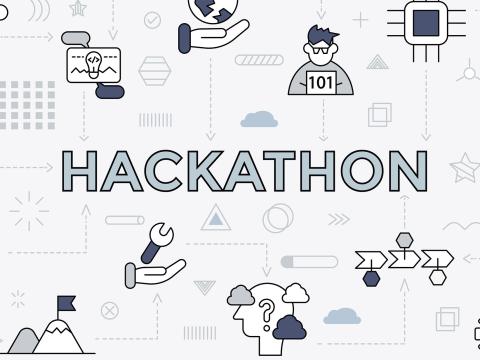On Point: Q&A With Lt. Gen. James Terry, USA (Ret.)
What was your reaction to the DoD Data, Analytics and AI [artificial intelligence] Adoption strategy?
AI, especially generative AI, presents enormous potential, and the strategy connects ways and means to a desired end-state. Getting to that end-state, which can morph based on assessments, requires campaigns linking tactical activity to objectives. This strategy supports communicating the approach to the DoD enterprise and to industry. Clear communication and discussion are essential. It also requires speed of delivery and adoption at scale. Finally, for industry, it provides a framework to collaborate in developing solutions to manage data analytics and the AI ecosystem.
What are the biggest challenges to fielding AI?
Getting the policy right. Policy addressing ethical challenges with AI would be helpful, especially in military applications.
Human-in-the-loop, on-the-loop, or out-of-the-loop comes to mind. Let’s take the fires chain, also called the effects chain. The combination of lethal and nonlethal means to achieve an effect will improve exponentially with advancing technology and AI.
AI can certainly assist in intelligence, targeting, weapons selection and assessments, which inform humans, who ideally make timely and accurate decisions to employ lethal and nonlethal force.
When AI gets so good that humans are taken out of that chain, we have autonomously acting systems, not just robotics. I become concerned if humans are less involved in decisions. Our armed forces are incredibly professional and disciplined and respect humanity. Lose that respect, and we are no better than our adversaries and enemies.
Next, we need to be prepared and agile to address the speed at which AI develops. I would throw scale alongside speed because if we have the right policy complementing strategy, and enough agility, we can adapt at scale to meet future demands.
Finally, we must develop AI-savvy leaders who make sound and ethical decisions. Leader development is our future insurance policy.
What wisdom can you offer for adopting AI?
Organizations must learn their way through uncertainty, in part by placing themselves in the right conditions during training. Over time that reduces unknowns and moves leaders and organizations toward certainty. By creating a realistically replicated training environment employing AI alongside other technologies, putting it in the hands of soldiers and leaders, and then training, we could adopt AI quicker, support leader development, improve AI development and build trust in AI. We must close that trust gap, or AI could outpace people.
How will AI change the way commanders operate?
My imagination takes me to an AI digital twin assistant. All humans, including commanders, have limited endurance. Perhaps AI becomes a crosscheck for decision quality, but I do not see it replacing commanders.
Before digital twins evolve, we may see AI accelerate certain warfighting processes like intelligence production cycle for decision support. Decision-makers may soon have the technology to speed up intelligence production cycles and boost the overall quality of intelligence and information supporting commander decisions.
Our adversaries will use AI to mislead and inject misinformation into our intelligence cycles. Future commanders must be AI savvy and discern misinformation, identify false flags created by generative AI, and make decisions using personal best judgment in uncertain times.
How does the AI strategy affect companies like Cubic?
First, our workforce works diligently to ensure we get warfighting requirements right, starting with technical proposals that address requirements and that make sense to end users. For example, zero trust is a requirement that begins to address some of the topics discussed. Protecting intelligence and information on network architectures is critical, and we are well into it.
Next, we are an industry leader in replicating multidomain training environments through blended live, virtual and construction threads. Those environments are perfect to put AI and innovative technologies with soldiers and leaders for training but also to better develop AI, close that trust gap, and train AI-savvy leaders for the future!
Questions and answers have been edited for concision and clarity.





Comments